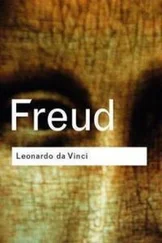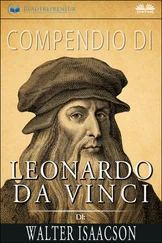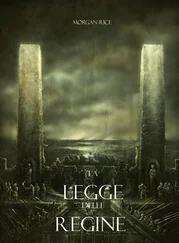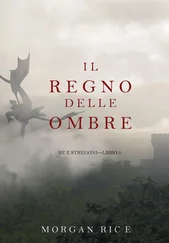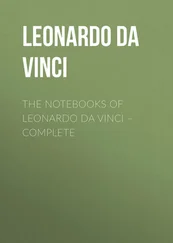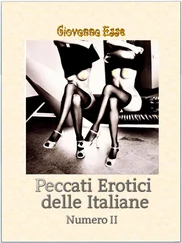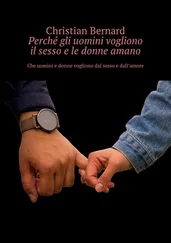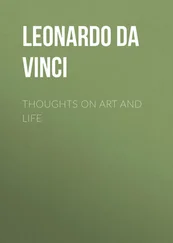The young Leonardo also wrote his prose in Florentine language and in this way he was in no instance inferior to the works of the great Dante, Petrarch and Boccaccio. His notes in volgare, the language spoken in Florence, are considered by critics as extraordinary examples for the entire Italian Renaissance. His prose is in a sense the profane pendant of the literary language of his famous Tuscan predecessors. Free from any rhetoric, his prose is unaltered and cares little about harmony and culture. Obviously, he reflects the language spoken in Florence at that time: with its colourful expressiveness, robustness and precision. His Florentine is not the language of scholars, but of simple people. As with his paintings, his prose is always proactive, energetic, imperfect and modern, making it playfully compete with Giovanni Boccaccio, considered the father of Italian prose. Today there are more than 8000 sheets of over 16,000 pages of Leonardo's notes written in the vernacular that listed all sorts of observations and insights. Leonardo did not publish any of his writings. It can be assumed, however, that Leonardo has filled at least 60,000 or even 100,000 pages in the vernacular: notes that he completed illustrating with the corresponding drawings. Many of these pages would still be hidden in some remote archive.
Sodom and Gomorrah in Florence
His immeasurable ambition was sometimes so strong for Piero da Vinci that it led him to despair. He knew that he had to ponder every action wisely to get closer to his great goal. His father had become a notary in Vinci. However, the son turned his back on Vinci, as his ancestors had once done, because he wanted to make a career in Florence at all costs. The city on the Arno was at the time the undisputed world financial centre. Business was booming. He noticed conscientious people like him, who regulated these activities, were in great demand. But the transition from Vinci to Florence was not easy. To make his way into the city dominated by the powerful de' Medici family he had to work hard, but luckily he was soon welcomed into the corporation of judges and notaries. In March 1448 he signed his first contract. In 1459 Piero moved definitively to Florence. During this period he lived near the Badia Fiorentina, around the religious centre of the city where the Benedictine abbey was located. In a palace next door there was also the seat of the corporation of judges and notaries. Piero lived alone near Piazza San Florenz, before moving to Via Ghibellina. In the longest and most important street of his time, he also had his notarial office near the Palazzo del Podestà, where the municipal authority had its first seat. He then rented this building as his office from 1468 onwards, together with his partner Piero di Carlo del Viva. From 1477 onwards Piero da Vinci was the only owner of the notarial office.
Marrying a woman belonging to the same social rank was an iron rule at the time, whether it was belonging to the nobility, the rich bourgeoisie or one of the various guilds. The chosen one had to be young, rich and virgin: a good guarantee for the procreation in the family. The concept of beauty was just as strong. Dante and Petrarch had created through their works a new female ideal of beauty. The worshippers had to have white skin, golden reddish hair and had to bring substantial sums of money as a dowry. The marriage of love did not exist and would only make its way into the 20th century. Piero da Vinci was strongly determined to keep the family's property together and, at best, also to increase it, making it a good party, when it came to choosing the future wife. The bride's dowry was compulsory and was guaranteed in a contract before the day of the marriage itself. The greater the bride's dowry, the better the reputation of the family in question. Everything was then meticulously regulated in special marriage contracts. Piero da Vinci knew by profession the premises of a marriage. In the marriage contracts it was noted with great meticulousness, how much dowry the bride would receive from her father and what would happen to the dowry, for example, if the wife would die prematurely without having children. Piero da Vinci had drafted several of these contracts as a notary public. First, it was important that the marriage of convenience guaranteed the suitable offspring of the family. Only then could the family tradition and its wealth be preserved or increased. At a time when many women died at birth or of puerperal fever, having children was not taken for granted.
The ambitious father Piero da Vinci, who had recognized "Lionardo" as his illegitimate son, was however, struggling with a great private dilemma. He had made a huge leap in his career from Vinci to Florence, following in the footsteps of his father and working in Florence as a notary public, even around the all-powerful Medici family, which earned him, in addition to great esteem, many large commissions. Although he had made an outstanding career in Florence, the much desired legitimate male son, however, was still missing. But this couldn't have been Piero´s fault. After all, he already had an illegitimate male son named Leonardo and his young wives, whom he had married in rapid succession, actually had all the characteristics necessary to guarantee him a worthy heir. So Piero da Vinci left no stone unturned to have a legitimate son. Although Leonardo was not presentable because he was illegitimate, on the other hand, Piero never failed in his duties as a father, introducing his illegitimate son into Florentine society in the best possible way and also on the basis of his influence.
Florence was radiant at this time. In no other city, in Italy and in the world then known, the social upheaval was felt economically, socially and culturally as distinctively as in the city on the Arno. He had obtained his wealth in the gold, silk and wool trade in the fifteenth century. Florence was now a leader in the trade in precious damask and brocade silk fabrics. Fabrics with gold and silver threads were in demand and popular among rich patricians and princely houses throughout Europe as an indispensable accessory to the fashion of the time. Any price was paid for these precious accoutrements. In the meantime, the flourishing banking sector had also made Florence and the Medici family immensely rich. A revaluation of the so-called vulgar as the language of literature had already been anticipated by the poets Dante Alighieri, Francesco Petrarca and Coluccio Salutati, inaugurating a new phase of Italian literature. Giovanni Boccaccio, who in his extraordinary novels, in addition to talking about Platonic love, also recounted the implications of carnal love with its sober, absurd and incomprehensible sides, combining comedy with tragedy, contributed from a literary point of view, further, to the birth of a new literary language in Florence. In fact, a spirit prevails in it that easily gets rid of the perceptions and limits of the dark Middle Ages. The attention in it was no longer turned to God, but to man with his joys, his vanities and his sufferings. In Florence, the legacy of Greek and Roman antiquity was suddenly rediscovered on a broad front and further developed with a decisive accent. For the first time, the philosophical exploration of the almost forgotten heritage of antiquity made its way, developing a new aesthetic based on overcoming it and rediscovering this heritage. A new conception of man, but also a revolutionary vision of the world, thus emerged. As a result, the individual was not only able to decide freely about his own life, but was also the creator of his own happiness and able to shape nature according to his conception of the world. The separation of body and mind was strictly rejected here. The exchange of knowledge, ideas and opinions thus received new impulses.
The new spirit has now spread mainly among the elite of Florentine society. Among those who held high public office. But these new humanist ideals also divided the bourgeoisie and the craftsmen of the city society, because both pragmatism and individualism proved to be the engine of economic and social success. For the inhabitants of Florence, competition between these two sets of ideals was seen as a blessing that legitimized the wealth acquired and active participation in socio-political life was a duty. The visual artists, who did not really mean themselves as artists, but rather as "craftsmen" shared this new vision of things. Their works portrayed these new ideas in a vivid and comprehensible way. When writers referred to new ideas in their literature, written mainly in Latin, they only reached a relatively small elite circle of recipients. The rapid spread of new ideas must therefore be attributed primarily to visual artists. The churches, however, which until then had been seen as the mystical and intellectual center of the whole city, were now also threatened architecturally by the new spirit. The rich patrician families built splendid, profane palaces in which artists and craftsmen paid homage to the new spirit, without the omnipresence of the concept of God. The man of that time was slowly, but continuously, freed from the chains of the medieval perspective, in which the real world had to reconcile itself with the official vision of the church. The city of Florence, which was considered the "new Rome" or the "new Athens", became therefore the brilliant metropolis where man was celebrated in an unbridled way his vices and his joys.
Читать дальше

